AUTHOR ARCHIVES: Field Service News
About the Author:
Field Service News is the world's leading publication for dedicated to the field service read by over field service professionals across the globe. If you are a field service practitioner you may qualify for a complimentary industry subscription - visit fieldservicenews.com/subscribe now!
Feb 18, 2022 • Features • Augmented Reality • White Paper • Digital Transformation • customer experience • CareAR
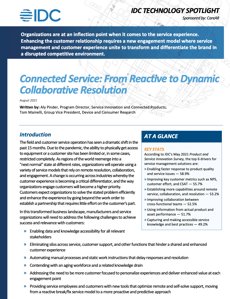
This feature is just one short excerpt from a recent white paper published by CareAR.
www.fieldservicenews.com subscribers can read the full white paper now by hitting the button below.
If you are yet to subscribe you can do so for free by hitting the button and registering for our complimentary subscription tier FSN Standard on a dedicated page that provides you instant access to this white paper PLUS you will also be able to access our monthly selection of premium resources as soo as you are registered.

Data usage note: By accessing this content you consent to the contact details submitted when you registered as a subscriber to fieldservicenews.com to be shared with the listed sponsor of this premium content CareAR who may contact you for legitimate business reasons to discuss the content of this white paper, as per the terms and conditions of your subscription agreement which you opted into in line with GDPR regulations and is an ongoing condition of subscription.
Considering CareAR, a Xerox Company
CareAR provides a full suite of end-to-end service experience management (SXM) SaaS-based solutions across service, support, sales, and marketing workflows. The CareAR SXM platform makes expertise accessible instantly for customers, employees, and field workers through live visual AR and artificial intelligence (AI) interactions, instructions, and insights as part of a seamless digital workflow experience. CareAR helps bridge the skills gap and accelerate knowledge transfer through augmenting intelligence while providing greater efficiencies, customer outcomes, and safety as well as reduced carbon emissions.
AI/AR-Powered Service ExperiencesCareAR delivers critical context through real-time visual AR interactions, instructions, and intelligence as part of a seamless digital workflow. The CareAR SXM platform takes advantage of smartphones, tablets, and other devices such as smart glasses and drones to capture real-time video for a personalized perspective of every support engagement, linking a remote expert with a customer or a field technician. Graphical guidance such as a laser pointer, circles, and annotations is overlaid on video in 3D to create an immersive AR experience. Rear-facing smartphone camera use focuses on the target issue while eliminating visible video lag or latency. Computer vision automatically frames the area being considered. Digital information is overlaid on real-time video with "stickiness" to its intended area despite movement, which is a defining CareAR characteristic. As a result, the real-world visual is blended with digitally created images to focus attention with graphical direction to improve service and support outcomes.
Contextualization of Content
CareAR Insight delivers contextual data for greater insights into specific assets, issues, and resolutions. By combining AI with AR, CareAR augments the intelligence of service teams to bridge knowledge gaps and uncover insights into hidden problems. The technology helps the service professional get to the root cause of the issue faster by accessing a full view of the asset's data, reducing the duration of a service call, and eliminating costly repeat visits.
Self-Solve Instructions
CareAR provides a simple but powerful tool to create AR-enabled visual instructions and make information accessible to users. AI-powered computer vision is used to access the collective intelligence of multiple users and then put that information into action. CareAR merges contextual video data with interactive guides to increase a user's level of knowledge, whether the user is a field service technician looking to fill a gap in knowledge or skills or a customer needing instruction to assemble a device after unboxing.
Integrated Workflow
CareAR natively integrates with service management platforms such as ServiceNow across customer, field, and IT service management. This end-to-end integration allows field technicians to capture images and recordings during service sessions. That content is automatically saved in the originating work order, case, incident, or knowledge base, eliminating a series of steps to enhance knowledge transfer and ensure proof of work completion or compliance.
SXM Use Cases
AR guidance generated by a remote expert or in the form of self-serve instructions is the most common way AR value is realized. Primary use cases for the company's solution include:
- Field Service. Supporting technicians paired with an expert located elsewhere using AR is a common use case. Multiple experts or field service technicians may be included in an AR session. Key drivers for this case include:
-
Skills. Experts are increasingly in short supply. Field technicians are frequently junior level and/or contractors lacking experience.
-
Effectiveness and efficiency. Reduced time to resolve, improved first-time fix rates, reduced truck rolls, and enhanced customer experience are examples of key field service metrics that benefit from the technology.
-
Integration. Silos of data lead to disconnected outcomes. Integration across data sources enables intelligence on AR effectiveness, frequency of uses, and CRM connectivity to establish a single view of the data for the field service team.
-
-
Customer Service. Contact center and customer support agents work with customers to resolve issues faster. This is an AR use case that moves the needle on customer experience with emotional impact and enhanced engagement. Key drivers for this case include:
-
Internet of Things (IoT). Home devices are becoming more connected and complex. Customers require assistance to overcome language and jargon barriers for effective diagnosis and resolution.
-
Customer experience. Customers increasingly prefer to self-serve. But when they fail, they call. When they call, expectations are high and commonly emotionally charged.
-
Fewer technician visits. Remote assistance reduces technician visits, which many customers resisted during the pandemic and still prefer to avoid.
-
-
Industry 4.0. AR-enhanced procedural instructions aid employees with assembly and troubleshooting and also help QA staff increase their own efficiency and effectiveness. Key case drivers include:
-
Hands free. Wearables tend to play a more significant role in this use case.
-
Step by step. AR guidance and insights are emphasized. Remote expert support also plays a role, especially with complex environments.
-
Integration. Instrumentations and procedural adherence are frequently required.
-
Challenges
Technologies to enable collaboration and real-time remote support are moving beyond the pilot stage for many organizations, especially due to the disruption to the market in 2020. However, any innovative technology, regardless of market shifts, will face challenges in adoption, deployment, and full utilization. Technology firms such as CareAR must address three primary challenges in the market:
-
Historically, the adoption of innovative technologies in the customer support and field service market has moved slowly from concept to pilot to scalable production. Establishing a clear adoption path that solves various use cases will help CareAR navigate pilot purgatory.
-
Service technology and digital transformation sometimes take a back seat to other digital investments within the manufacturing and service industry. This trend is changing as the impact and importance of the service experience rise in the hierarchy of strategic initiatives, but it is still a challenge.
-
Companies such as CareAR must improve the content creation and best practice sharing, validation, relevance, and updating process. Technology to collaborate and capture knowledge is only as good as the content being shared.
The service experience companies deliver to customers is at an inflection point whereby customers demand immersive experiences, collaboration with the service organization when necessary, and resolution on a first call or visit. Manufacturers and service organizations should consider the following actions as they digitally transform and look to engage customers, field and customer support teams, and partners differently:
-
Enable dynamic service resolution models where physical presence is not the only path to addressing a failure or customer issue
-
Foster an environment of real-time collaboration and best practice sharing between the service team and with the customer
-
Move beyond efficiency to prioritize customer and field service employee experiences and outcomes
-
Hasten digital transformation as reactive service and failed first service visits lead to lower customer satisfaction and lost future revenue.
Remember that AR technology is a starting point and not the end goal. The ability to intelligently engage, collaborate, and resolve will be the differentiator of the future.
Field Service News subscribers can access the full white paper sponsored by CareAR and written by Ali Pinder, Program Director, Service Innovation and Connected Products at IDC, and Tom Mainelli, IDC's Group Vice President, Device and Consumer Research, by clicking on the button below.
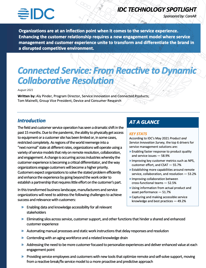
This feature is just one short excerpt from a recent white paper we published in partnership with Exel Computer Systems..
www.fieldservicenews.com subscribers can read the full white paper now by hitting the button below.
If you are yet to subscribe you can do so for free by hitting the button and registering for our complimentary subscription tier FSN Standard on a dedicated page that provides you instant access to this white paper PLUS you will also be able to access our monthly selection of premium resources as soo as you are registered.
 Data usage note: By accessing this content you consent to the contact details submitted when you registered as a subscriber to fieldservicenews.com to be shared with the listed sponsor of this premium content CareAR who may contact you for legitimate business reasons to discuss the content of this white paper, as per the terms and conditions of your subscription agreement which you opted into in line with GDPR regulations and is an ongoing condition of subscription.
Data usage note: By accessing this content you consent to the contact details submitted when you registered as a subscriber to fieldservicenews.com to be shared with the listed sponsor of this premium content CareAR who may contact you for legitimate business reasons to discuss the content of this white paper, as per the terms and conditions of your subscription agreement which you opted into in line with GDPR regulations and is an ongoing condition of subscription.
Further Reading:
- Read more about Digital Transformation @ www.fieldservicenews.com/digital-transformation
- Read more about Customer Experience @ www.fieldservicenews.com/customer+experience
- Learn more about CareAR @ carear.com
- Follow CareAR on Twitter @ twitter.com/carear_com
- Connect with CareAR on LinkedIn @ www.linkedin.com/carear/
Feb 11, 2022 • Features • White Paper • Digital Transformation • Data Management • customer experience • CareAR

This feature is just one short excerpt from a recent white paper published by CareAR.
www.fieldservicenews.com subscribers can read the full white paper now by hitting the button below.
If you are yet to subscribe you can do so for free by hitting the button and registering for our complimentary subscription tier FSN Standard on a dedicated page that provides you instant access to this white paper PLUS you will also be able to access our monthly selection of premium resources as soo as you are registered.

Data usage note: By accessing this content you consent to the contact details submitted when you registered as a subscriber to fieldservicenews.com to be shared with the listed sponsor of this premium content CareAR who may contact you for legitimate business reasons to discuss the content of this white paper, as per the terms and conditions of your subscription agreement which you opted into in line with GDPR regulations and is an ongoing condition of subscription.
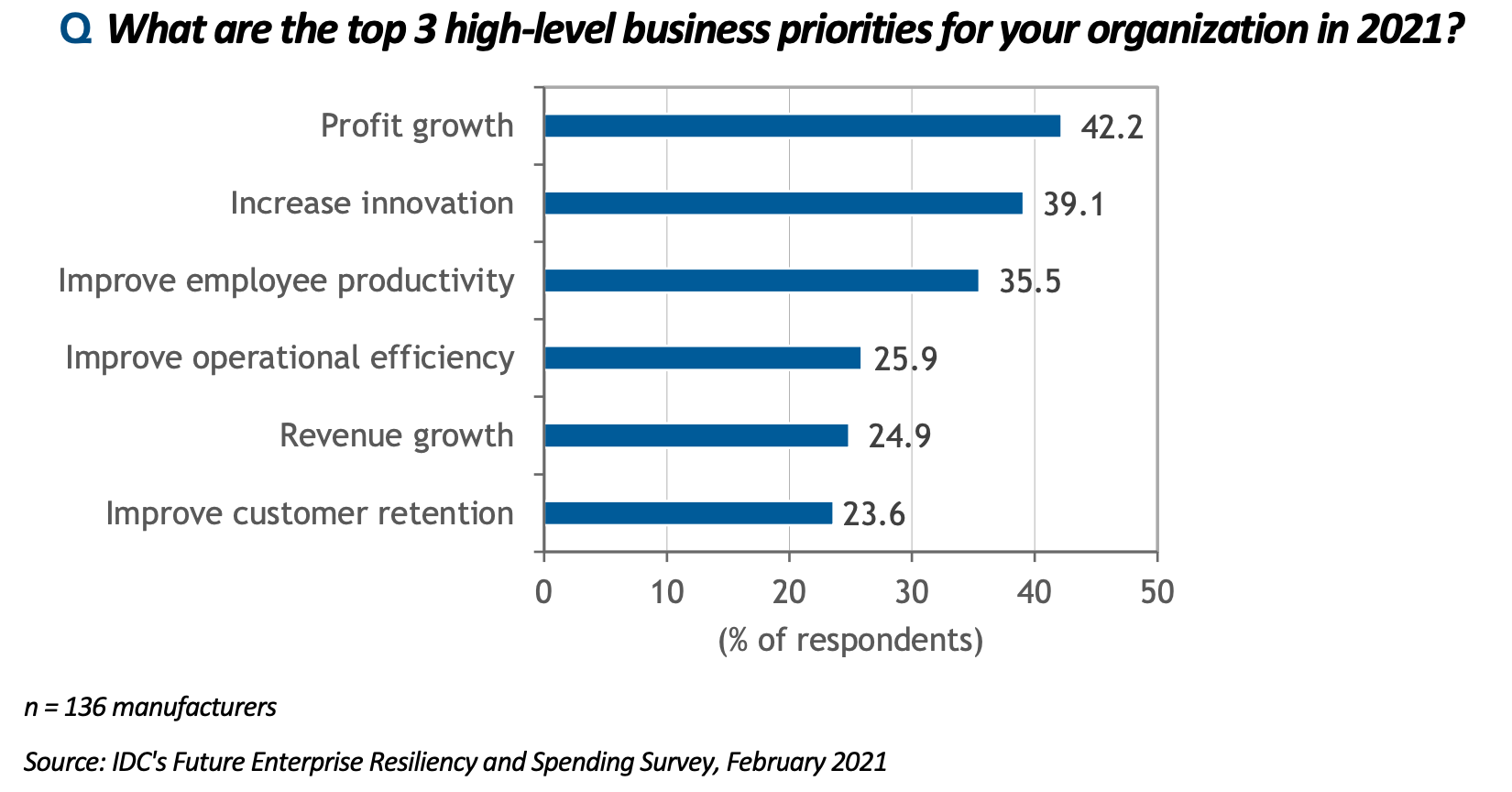
As manufacturers and service organizations shift their business and customer engagement models, they must address a few areas to truly bring together the service experience and the customer experience:
-
Establish the knowledge capabilities to address reactive, proactive, and self-service needs. No one model will be in place in all situations, and organizations will need to be nimble to adjust to the need efficiently.
-
Deliver support and resolution for both simple and complex work with a diverse workforce with various degrees of expertise. Customers want a resolution to ensure that their operation or experience is not negatively impacted by downtime. To provide this level of service, organizations need to solve problems of varying complexity. What has changed is this level of response needs to happen on the first visit because extended downtime due to a lack of expertise to solve a problem is unacceptable.
-
Harness the convergence of the customer experience with the service and support experiences, strengthening the partnership with customers. Data must flow across the organization, and manufacturers are beginning to understand they need to make data accessible across functional teams to offer an integrated customer experience. Customer centricity has shifted the focus of manufacturers to prioritize the needs of the customer and the service employee, providing them with the visibility to go beyond standard engagements to deliver "wow" experiences. Meeting service-level agreements (SLAs) is table stakes; organizations need to go beyond the standard contract to connect the service experience with other activities such as sales, marketing, and product improvements.
-
Leverage innovative technologies such as augmented reality (AR) to drive innovation and an enhanced customer experience. The pandemic helped drive a rapid shift where AR moved from being a cool future technology to a technology that's delivering tangible value around remote service, remote collaboration between a service worker and a customer, and self-service experiences with technical support. Nearly three-fourths (72.2%) of manufacturers in IDC's May 2021 Product and Service Innovation Survey pointed to AR as important or very important to their current efforts around service innovation.
AR technology has evolved dramatically over the past few years. The pandemic drove a big part of that evolution, as companies adapted to an ever-evolving set of circumstances on the ground. In a 2021 survey of AR adopters, IDC found that the top 3 benefits the technology brought to their businesses were increased worker efficiency, improved real-time collaboration, and improved knowledge transfer between expert and novice workers.
Another driving force behind the current uptick in AR adoption is that an increasing number of companies are finding ways to integrate AR capabilities into their existing workflows and back-end systems. Any organization looking at new technologies to become more dynamic and less reactive must consider the impact on its current processes to leverage existing systems and partners to drive improvements without creating disruption.
Field Service News subscribers can access the full white paper sponsored by CareAR and written by Ali Pinder, Program Director, Service Innovation and Connected Products at IDC, and Tom Mainelli, IDC's Group Vice President, Device and Consumer Research, by clicking on the button below.

This feature is just one short excerpt from a recent white paper we published in partnership with Exel Computer Systems..
www.fieldservicenews.com subscribers can read the full white paper now by hitting the button below.
If you are yet to subscribe you can do so for free by hitting the button and registering for our complimentary subscription tier FSN Standard on a dedicated page that provides you instant access to this white paper PLUS you will also be able to access our monthly selection of premium resources as soo as you are registered.
 Data usage note: By accessing this content you consent to the contact details submitted when you registered as a subscriber to fieldservicenews.com to be shared with the listed sponsor of this premium content CareAR who may contact you for legitimate business reasons to discuss the content of this white paper, as per the terms and conditions of your subscription agreement which you opted into in line with GDPR regulations and is an ongoing condition of subscription.
Data usage note: By accessing this content you consent to the contact details submitted when you registered as a subscriber to fieldservicenews.com to be shared with the listed sponsor of this premium content CareAR who may contact you for legitimate business reasons to discuss the content of this white paper, as per the terms and conditions of your subscription agreement which you opted into in line with GDPR regulations and is an ongoing condition of subscription.
Further Reading:
- Read more about Digital Transformation @ www.fieldservicenews.com/digital-transformation
- Read more about Customer Experience @ www.fieldservicenews.com/customer+experience
- Learn more about CareAR @ carear.com
- Follow CareAR on Twitter @ twitter.com/carear_com
- Connect with CareAR on LinkedIn @ www.linkedin.com/carear/
Feb 04, 2022 • Features • White Paper • Digital Transformation • Data Management • customer experience • CareAR

This feature is just one short excerpt from a recent white paper published by CareAR.
www.fieldservicenews.com subscribers can read the full white paper now by hitting the button below.
If you are yet to subscribe you can do so for free by hitting the button and registering for our complimentary subscription tier FSN Standard on a dedicated page that provides you instant access to this white paper PLUS you will also be able to access our monthly selection of premium resources as soo as you are registered.

Data usage note: By accessing this content you consent to the contact details submitted when you registered as a subscriber to fieldservicenews.com to be shared with the listed sponsor of this premium content CareAR who may contact you for legitimate business reasons to discuss the content of this white paper, as per the terms and conditions of your subscription agreement which you opted into in line with GDPR regulations and is an ongoing condition of subscription.
Manufacturers and service organizations need to manage various priorities to ensure they can survive, thrive, and excel in a competitive environment where customer expectations continue to rise.

BENEFITS
Service management with field technicians — and directly with customers — has long been held back by a reactive break/fix model. In this model, customers have to notify the service organization of a failure or a break. The field service team then must attempt to solve the issue with limited information gleaned from the customer or historical data from the last service visit. This process typically involves dispatching a service technician or engineer to a customer site to validate a diagnosis, often leading to a secondary or tertiary service call. Real-time visibility into the product or asset with detailed collaborative capabilities can transform the service and customer experience.
The shift from reactive service models to proactive service experiences has an impact that transcends operational efficiency to enhance the customer relationship. Establishing an operating model where the customer and the service employee are at the heart of the service experience is transformative and can be a true industry differentiator. This framework establishes a new partnership of shared goals, outcomes, and experiences that optimize service and deliver new value.
Connected service insights are part of the innovative future for manufacturers and service organizations. A few of the most impactful benefits derived from this approach are:
- Having the right content and insights at the point of need, which speeds up service resolution and avoids the need to sift through irrelevant manuals and work instructions with reactive and proactive service interactions
-
Capturing and then sharing institutional knowledge, which minimizes the impact of an aging or retiring field and service workforce
-
Improving increased first-time fix and lower mean-time-to-resolution metrics, which enhances the customer experience through proactive support
-
Avoiding unnecessary truck rolls that impact fuel usage, emissions, and safety, which helps improve operations
-
Establishing an emotional and personalized bond between the service team and the customer through contextual awareness of the problem at hand, integration of a full view of the customer, and self-service experiences
TRENDS
Manufacturers and service organizations are racing to digitally transform their business operations to deliver a new experience to customers, enhancing both the brand and the engagement model. Competition has forced manufacturers and service organizations to rethink how they strengthen bonds with customers, which wasn't historically necessary as they owned the customer life cycle. In IDC's November 2020 COVID-19 Impact on IT Spending Survey, nearly half of manufacturers said they prioritize creating new digital products and services and now look to deliver digital-first customer experiences — 46.2% and 31.9%, respectively
Field Service News subscribers can access the full white paper sponsored by CareAR and written by Ali Pinder, Program Director, Service Innovation and Connected Products at IDC, and Tom Mainelli, IDC's Group Vice President, Device and Consumer Research, by clicking on the button below.

This feature is just one short excerpt from a recent white paper we published in partnership with Exel Computer Systems..
www.fieldservicenews.com subscribers can read the full white paper now by hitting the button below.
If you are yet to subscribe you can do so for free by hitting the button and registering for our complimentary subscription tier FSN Standard on a dedicated page that provides you instant access to this white paper PLUS you will also be able to access our monthly selection of premium resources as soo as you are registered.
 Data usage note: By accessing this content you consent to the contact details submitted when you registered as a subscriber to fieldservicenews.com to be shared with the listed sponsor of this premium content CareAR who may contact you for legitimate business reasons to discuss the content of this white paper, as per the terms and conditions of your subscription agreement which you opted into in line with GDPR regulations and is an ongoing condition of subscription.
Data usage note: By accessing this content you consent to the contact details submitted when you registered as a subscriber to fieldservicenews.com to be shared with the listed sponsor of this premium content CareAR who may contact you for legitimate business reasons to discuss the content of this white paper, as per the terms and conditions of your subscription agreement which you opted into in line with GDPR regulations and is an ongoing condition of subscription.
Further Reading:
- Read more about Digital Transformation @ www.fieldservicenews.com/digital-transformation
- Read more about Customer Experience @ www.fieldservicenews.com/customer+experience
- Learn more about CareAR @ carear.com
- Follow CareAR on Twitter @ twitter.com/carear_com
- Connect with CareAR on LinkedIn @ www.linkedin.com/carear/
Jan 28, 2022 • Features • White Paper • Digital Transformation • Data Management • customer experience • CareAR
Organizations are at an inflection point when it comes to the service experience. In this new series of excerpts from a recent IDC white paper, sponsored by CareAR and now available at Field Service News, we discuss how service organisations can...
Organizations are at an inflection point when it comes to the service experience. In this new series of excerpts from a recent IDC white paper, sponsored by CareAR and now available at Field Service News, we discuss how service organisations can enhance customer relationships using a new engagement model where service management and customer experience unite to transform and differentiate the brand in a disrupted competitive environment.

This feature is just one short excerpt from a recent white paper published by CareAR.
www.fieldservicenews.com subscribers can read the full white paper now by hitting the button below.
If you are yet to subscribe you can do so for free by hitting the button and registering for our complimentary subscription tier FSN Standard on a dedicated page that provides you instant access to this white paper PLUS you will also be able to access our monthly selection of premium resources as soo as you are registered.

Data usage note: By accessing this content you consent to the contact details submitted when you registered as a subscriber to fieldservicenews.com to be shared with the listed sponsor of this premium content CareAR who may contact you for legitimate business reasons to discuss the content of this white paper, as per the terms and conditions of your subscription agreement which you opted into in line with GDPR regulations and is an ongoing condition of subscription.
The field and customer service operation has seen a dramatic shift in the past 15 months. Due to the pandemic, the ability to physically get access to equipment or a customer site has been limited or, in some cases, restricted completely. As regions of the world reemerge into a "next normal" state at different rates, organizations will operate using a variety of service models that rely on remote resolution, collaboration, and engagement. A change is occurring across industries whereby the customer experience is becoming a critical differentiator, and the way organizations engage customers will become a higher priority. Customers expect organizations to solve the stated problem efficiently and enhance the experience by going beyond the work order to establish a partnership that requires little effort on the customer's part.
In this transformed business landscape, manufacturers and service organizations will need to address the following challenges to achieve success and relevance with customers:
-
» Enabling data and knowledge accessibility for all relevant stakeholders
-
» Eliminating silos across service, customer support, and other functions that hinder a shared and enhanced customer experience
-
» Automating manual processes and static work instructions that delay responses and resolution
-
» Contending with an aging workforce and a related knowledge drain
-
» Addressing the need to be more customer focused to personalize experiences and deliver enhanced value at each engagement point
-
» Providing service employees and customers with new tools that optimize remote and self-solve support, moving from a reactive break/fix service model to a more proactive and predictive approach
KEY STATS
According to IDC's May 2021 Product and Service Innovation Survey, the top 6 drivers for service management solutions are:
-
» Enabling faster response to product quality and service issues — 58.9%
-
» Improving key customer metrics such as NPS, customer effort, and CSAT — 55.7%
-
» Establishing more capabilities around remote service, collaboration, and resolution — 53.2%
-
» Improving collaboration between cross-functional teams — 52.5%
-
» Using information from actual product and asset performance — 51.7%
-
» Capturing and making accessible service knowledge and best practices — 49.2%
Watch out for the next feature next week where we discuss some of the top business priorities for manufacturers and service organizations in this "next normal" environment.
Field Service News subscribers can access the full white paper sponsored by CareAR and written by Ali Pinder, Program Director, Service Innovation and Connected Products at IDC, and Tom Mainelli, IDC's Group Vice President, Device and Consumer Research, by clicking on the button below.

This feature is just one short excerpt from a recent white paper we published in partnership with Exel Computer Systems..
www.fieldservicenews.com subscribers can read the full white paper now by hitting the button below.
If you are yet to subscribe you can do so for free by hitting the button and registering for our complimentary subscription tier FSN Standard on a dedicated page that provides you instant access to this white paper PLUS you will also be able to access our monthly selection of premium resources as soo as you are registered.
 Data usage note: By accessing this content you consent to the contact details submitted when you registered as a subscriber to fieldservicenews.com to be shared with the listed sponsor of this premium content CareAR who may contact you for legitimate business reasons to discuss the content of this white paper, as per the terms and conditions of your subscription agreement which you opted into in line with GDPR regulations and is an ongoing condition of subscription.
Data usage note: By accessing this content you consent to the contact details submitted when you registered as a subscriber to fieldservicenews.com to be shared with the listed sponsor of this premium content CareAR who may contact you for legitimate business reasons to discuss the content of this white paper, as per the terms and conditions of your subscription agreement which you opted into in line with GDPR regulations and is an ongoing condition of subscription.
Further Reading:
- Read more about Digital Transformation @ www.fieldservicenews.com/digital-transformation
- Read more about Customer Experience @ www.fieldservicenews.com/customer-experience
- Learn more about CareAR @ carear.com
- Follow CareAR on Twitter @ twitter.com/carear_com
- Connect with CareAR on LinkedIn @ www.linkedin.com/carear/
Jan 19, 2022 • News • BigChange • Digital Transformation • field service management • Service CRM • EMEA • COMPLETE SHUTTER SERVICES
Pinnacle Group has transformed its customer experience and increased operational efficiency following the implementation of the latest field service management software from BigChange.
Pinnacle Group has transformed its customer experience and increased operational efficiency following the implementation of the latest field service management software from BigChange.Supporting over 300,000 homes, 200 schools and 100 public and private buildings, Pinnacle is one of the UK’s largest facilities management providers. Using BigChange, Pinnacle has achieved a significant improvement in transparency and communication with clients by delivering live operational information and has overcome challenges resulting from the pandemic which saw a reduced workforce facing an increased workload.
USING BIGCHANGE'S FIELD SERVICE SOFTWARE, PINNACLE CAN RECORD, MONITOR AND CONTROL EVERY TASK IN REAL-TIME
“Since implementing BigChange we have seen real time savings and productivity gains resulting in better quality of service, reduced resources and costs, and increased client and customer satisfaction,” commented Raaj Bharania, Pinnacle Group Business Manager. “This can be directly translated into contract extensions and new contract awards.”
Pinnacle is a community-facing, people-first business that delivers, manages and maintains communities and places – including multi-tenure housing, schools, open spaces, public and private buildings, retail schemes, distribution centres, manufacturing plants, utilities and broadband networks – as well as a range of complementary employment and wellbeing outcomes. Formed in 1994, Pinnacle operates nationwide with major hubs in London, Chelmsford, Slough, Birmingham, Leeds, Morecambe, Stoke and Carlisle. Pinnacle provides integrated Facilities Management across all sectors and the frontline operation makes around 1,400 call outs per day with an 80/20 split between scheduled and reactive.
Since implementing the complete job management solution, which incorporates customer relationship management (CRM), job scheduling, live tracking, field resource management, financial management and business intelligence in one simple to use and easy to integrate platform, Pinnacle can record, monitor and control every task in real-time. Details of site inspections and service delivery visits are captured, recorded and reported, complete with before and after photos, using a traffic light system allowing operatives to self-certify works.
“By giving clients access to the BigChange platform we have been able to reduce the time spent monitoring and reporting as they can access the information they need when they need it,” said Area Manager Marcin Rosiak whilst Business Manager Seundouss Laroussi added, “BigChange has been transformational for us, and our clients, and we cannot imagine our operation without it!”
BigChange has already been deployed on over 90 percent of Pinnacles soft FM contracts where it has been tailored to meet specific KPIs, SLAs and reporting requirements and roll out on the remaining 10 percent is ongoing. Further planned work includes the transition to a completely paperless operation and the use of BigChange to improve workforce engagement and health and safety management.
Further Reading:
- Read more about Digital Transformation @ www.fieldservicenews.com/digital-transformation
- Read more about Field Service Management @ www.fieldservicenews.com/field-service-management
- Read more about BigChange on Field Service News @ www.fieldservicenews.com/bigchange
- Learn more about BigChange @ www.bigchange.com
- Find out more about Pinnacle Group @ www.pinnaclegroup.co.uk
- Follow BigChange on Twitter @ twitter.com/bigchangeapps
Getac has announced the launch of its ZX10 fully rugged tablet, a versatile new 10-inch device built around the Android 11 operating system (OS).
Getac has announced the launch of its ZX10 fully rugged tablet, a versatile new 10-inch device built around the Android 11 operating system (OS).
The ZX10 will sit alongside Getac’s popular ZX70 fully rugged 7-inch Android tablet, giving customers in industries such as public safety, utilities, energy, transport & logistics, manufacturing, automotive, and defence more options when choosing rugged Android devices that best suit their operational needs.
Powerful Operational Efficiency
The ZX10’s combination of Android 11 OS, Qualcomm Snapdragon 660 Mobile Platform, and Adreno™ 512 GPU delivers a seamless user experience, enabling efficient workflow in a wide range of field scenarios. Dual hot-swappable batteries ensure full-shift operation, while the LumiBond® sunlight readable display (boasting 800nits of brightness) with rain and glove touch capability helps maintain productivity in a range of weather conditions. The ZX10 also has options of up to 6GB LPDDR4 RAM and 128GB storage to help customers prepare for future industry demands.
Excellent Field Communications
An 8MP front camera and best-in-class 16MP rear camera deliver exceptionally high-quality photo/video capture, while dual integrated microphones filter out loud background noise for enhanced audio quality. Elsewhere, Wi-Fi 802.11 ac, Bluetooth (v5.0), dedicated GPS and an optional 4G LTE module offers rapid data transfer and location positioning capabilities in remote field locations. Dual LTE SIM card slots allow field workers to quickly switch between two 4G network carriers. The support to CBRS private network further increases operational flexibility.
Industry Leading Rugged Reliability
Like all Getac devices, the ZX10 is built rugged from the ground up to provide exceptional reliability and peace of mind. MIL-STD-810H and IP66 certification means it can easily withstand drops of up to six feet, shocks, rain, vibration, dust, and liquid spillages. Furthermore, an operating temperature range of -29°C to 63°C (-20°F~145°F) delivers year-round usability. With all these built-in rugged features, the ZX10 is still only 17.9mm thick and weighs just over 1kg, offering excellent portability and mobility in the field.
Ideally Suited to Key Industry Applications
The ZX10 is designed to meet the needs of public safety, utilities, energy, transport & logistics, manufacturing, automotive, and defence professionals who utilise Android-based devices. As part of Getac Select®, it is available in a range of industry specific builds that combine different features, accessories, and software utilities to help customers quickly solve everyday challenges. Below are some example use cases:
Data capture and ePCR access for emergency first responders
Emergency first responders require real-time access to electronic patient health records (ePCRs) to deliver appropriate care and medication, often in high pressure environments. The ZX10’s powerful connectivity options allow them to quickly access this information, while optional barcode/RFID and smart card readers help verify IDs, check operational procedures, and ensure patient confidentiality.
Rugged, full-shift reliability for field utilities engineers
When conducting outdoor activities like GIS mapping, utilities engineers need devices they can rely on in a variety of weather conditions. Furthermore, a lack of access to charging facilities while working in remote locations means long battery life is vitally important. The ZX10’s fully rugged design, dedicated GPS, versatile LumiBond® display with rain and glove touch capability, and dual hot-swappable battery design gives field engineers the peace of mind they need, wherever their duties take them.
Remote communications and asset maintenance for energy workers
Energy workers must regularly inspect and maintain assets in the field, but often require remote support from experts to do so effectively. The ZX10’s mobile connectivity, best-in-class 8MP front camera and 16MP rear camera and dedicated GPS lets workers interact with colleagues around the world in real-time, quickly share/exchange information, and complete tasks at the first time of asking. Dual LTE SIM card slots also let them quickly switch between two different carrier networks without having to swap SIM cards and staying connected conveniently.
Optimising efficiency for warehouse employees and forklift drivers
Warehouse employees and forklift drivers need to collect and move goods between multiple different environments, ranging from internal cold storage and climate-controlled areas to external yards that are exposed to the weather and elements. The ZX10’s compact yet rugged design and wide operating temperature range means it can seamlessly transition between these environments without fear of damage or disruption. Additionally, the optional barcode/RFID-reader and range of programmable buttons makes it quick and easy to identify/process items in a matter of seconds.
“As Android continues to gain popularity, a growing number of organisations are looking for rugged Android solutions that enable them to enjoy the versatility it has to offer, even when working in harsh and/or challenging environments,” says Rick Hwang, President of Getac Technology Corporation. “The ZX10 does exactly that, expanding our line-up of Android-based solutions and helping customers optimise their operational efficiency, while also hitting all-important total cost of ownership targets.”
Availability:
The ZX10 will be available in March.
Jan 14, 2022 • Fleet Technology • News • fleet management • Sustainability • Webfleet Solutions • Service Innovation and Design • EMEA
Three-quarters (74 per cent) of UK fleets have adopted more digital solutions since the start of the COVID-19 pandemic, new research has revealed.
Three-quarters (74 per cent) of UK fleets have adopted more digital solutions since the start of the COVID-19 pandemic, new research has revealed.
A pan-European study conducted by Webfleet Solutions among 1,050 fleet decision-makers found that in the UK, smaller fleets of up to 50 vehicles led the charge, accounting for 80 per cent of the tech adopters.
SME BUSINESSES HAVE RECOGNIZED THE VITAL ROLE THAT TECHNOLOGY CAN PLAY IN OVERCOMING THE FINANCIAL AND LOGISTICAL CHALLENGES
Electronic signature tech (60 per cent) topped the list of the new digital solutions, followed by mobile apps (50 per cent) and digital document systems, such as paperless invoicing (44 per cent). In every case, the uptick in digitisation was found to have helped their businesses deal with the pandemic.
“COVID-19 continues to have a dramatic impact on the way we live and work, making operational flexibility, smart customer interactions, risk management and cost control more important than ever,” said Beverley Wise, Sales Director UK and Ireland, Webfleet Solutions.
“SME businesses, in particular, have had the agility to respond quickly to the ever-changing commercial landscape and have recognised the vital role that technology can play in overcoming the financial and logistical challenges – improving the efficient flow of information, supporting remote working and minimising person-to-person interactions.”
Indeed, the drive to increase efficiency was found to be top reason for UK fleets adopting more digital solutions, cited by more than half (55 per cent) of those surveyed. This was closely followed by efforts to reduce the spread of infection (51 per cent) and a continued commitment to sustainability (49 per cent).
Of those that haven’t adopted more digital solutions, 28 per cent cited cost as a barrier, 28 per cent said they had enough in place, while 22 per cent said they lacked the time or resources to implement new systems.
The Netherlands led the digitisation trend with 85 per cent adopting new digital solutions, followed by Italy and Spain (both 77 per cent).
For an overview of the findings, download the infographic here.
Further Reading:
- Read more about Digital Transformation @ www.fieldservicenews.com/service-innovation-and-design
- Read more about Fleet Technology @ www.fieldservicenews.com/fleet-technology
- Learn more about Webfleet Solutions @ www.webfleet.com
- Read more about Webfleet Solutions on FSN @ www.fieldservicenews.com/webfleet-solutions
- Follow WebFleet Solutions on Twitter @ twitter.com/Webfleetnews
Jan 13, 2022 • Software & Apps • Microsoft • Digital Transformation • Rugged laptops • rugged mobile devices • durabook • GLOBAL
The cyber landscape is constantly evolving; that’s why organisations across every sector need reliable, cutting-edge devices that can keep pace.
The cyber landscape is constantly evolving; that’s why organisations across every sector need reliable, cutting-edge devices that can keep pace.
Durabook trusts Microsoft Windows to deliver an OS platform that meets the most stringent security and enterprise management requirements while providing those controls in a transparent way to the end user, enhancing and improving productivity.
POWERFUL MARKET LEADER IN DIGITAL TRANSFORMATION
Microsoft is committed to delivering innovation. Its comprehensive technology stack can be leveraged to create solutions that are relevant to today’s demanding and rapidly evolving industry needs, redefining business models to deliver real value. AI-powered insights enable faster decisions and actions that deliver reliable and predictable performance improvements.Durabook’s Windows-based tablets use cutting-edge CPUs, while the Windows platform was designed to evolve and exceed its previous generation in computing power, performance, functionality and versatility, from off-line age to today’s internet era. Windows OS has evolved so much that it can be found on mainframe data centers, cloud servers, industry-specific professional and corporate office workstations, personal and portable computers and edge computing devices. None of this could be achieved without the fundamental element - computing power.
COMPLIANCE EXPERTISE
Durabook knows that compliance is a continuous process, that’s why Microsoft’s solutions provide an end-to-end differentiated set of values to help customers:
• Intelligently protect and govern data anywhere it lives
• Identify and remediate critical insider risks;
• Quickly investigate and respond with relevant data
• Simplify and automate risk assessments.
Today, Microsoft is the only major cloud provider that provides customers with in-depth security, compliance (regulatory, audit, litigation, etc.), and privacy information, to assess the Microsoft Cloud with the Services Trust Portal (STP).
security specialists
Microsoft is committed to investing in privacy and control, compliance and transparency, and especially those features that matter the most to its customers, such as compliance certifications and best-in-class encryption.In today’s “zero-trust environment”, Microsoft enables businesses to protect data and keep it within their control by implementing industry-leading identity, security and compliance functionality to:
• Provide security and data privacy in the trusted Microsoft Cloud;
• Grant user access that allows only the levels of information required to do their jobs;
• Meet strict industry and governmental regulations for organizational and customer data privacy.
MULTI-TASKING CAPABILITIES
Windows OS is set apart from others by its multi-window and multi-tasking capability. Multi-tasking is most effective when multiple apps can be on the tablet screen at the same time, so Windows OS is designed to simultaneously perform multiple complex calculations in one computing cycle. Having sight of multiple windows at the same time allows more tasks to be performed at once, boosts efficiency. In addition, the introduction of high-definition hardware video output, such as Display port and HDMI port, allows Windows platform users to connect multiple external displays to mirror or expand their desktop workspace. Combining these features creates a powerful and versatile platform that greatly enhances user experiences and productivity across every working environment.
flexible, tailored solutions
Beyond Durabook’s own product range, Windows 10 Pro comes pre-installed on the world’s largest selection of business devices from leading manufacturers. These devices can meet the most exacting standards in performance, security, design and experience. For example, modern devices are cloud-ready and activate Windows 10 Pro features like longer battery life, fast WiFi, and better video conferencing for seamless functionality.
Windows-based tablets can run apps similar to those on PCs, making working and sharing files between the devices a seamless user experience. In addition, these tablets are renowned for their ‘Plug and Play’ capabilities. Whether in an office, manufacturing facility or in the field, the user can simply plug in expansion devices such as external monitors and detachable keyboards, to convert their device into a mini-PC system so they can perform their desired job function with ease.
More options are also presented to the enterprise regarding accessories, meaning greater cost flexibility. For example, users can customise R11 by installing different expansion modules suitable for unique field requirements. It features a host of integrated data-capture modules to retrieve and transmit information on the move. Optional features include RJ45, RFID reader, smart card reader, RFID reader and Magnet Strip Reader. This is just one example of how Durabook’s Windows-based devices can offer infinite possibilities in providing a total solution for every industry.
For more information: www.durabook.com/en/durabook-and-microsoft-windows-the-ultimate-partnership/
Further Reading:
- Read more about Digital Transformation @ www.fieldservicenews.com/digital-transformation
- Find out more about Durabook @ www.durabook.com/
- Read more about Durabook on Field Service News @ www.fieldservicenews.com/all-about-durabook
- Learn more about Durabook and Microsoft Windows @ www.durabook.com/durabook-and-microsoft/
- Follow Durabook on Twitter @ twitter.com/Durabook
- Follow Durabook on LinkedIn @ www.linkedin.com/company/durabook/
Jan 12, 2022 • News • construction • Volvo Construction • Sustainability • ABAX • Service Innovation and Design • EMEA
The construction sector accounts for a significant amount of CO2 emissions worldwide, and is still far behind in the green transition.
The construction sector accounts for a significant amount of CO2 emissions worldwide, and is still far behind in the green transition. With all Volvo machines now available in ABAX Smart Connect, the digitalisation of the industry can accelerate and help reduce climate emissions - using technology that is already installed and ready for use.
CHEAPER SOLUTIONS OVER SUSTAINABLE
A new report conducted by Ramirent* in Sweden shows that cheap alternatives are often chosen in favour of sustainable solutions, even though the cheap alternatives rarely prove to be cost-saving. With the right sustainability measures, which can be easily implemented, climate emissions from the construction industry can be drastically reduced.
TOP FOUR LEADING HEAVY EQUIPMENT MANUFACTURES AVAILABLE
ABAX is a telematics company that has minimised the digital threshold for the construction industry. With ABAX Smart Connect, they have made it easier for fleet owners to be aware of their emissions.
The top leading manufacturers** such as Catepillar, Hitachi and John Deere are already connected to ABAX Smart Connect. When Volvo now joins, the service will be available for a significant number of machine fleets worldwide. Through ABAX Smart Connect, construction companies receive ongoing status updates on their machines. In practice, this means greater control of unnecessary operating and service costs, and a daily status update on consumption and compilation of CO2 footprints. The technology is already installed in all Volvo machines, and the only thing required to use the digital tool is a connection to ABAX Smart Connect.
Volvo is a significant supplier of machines to the Scandinavian market. The opportunity to be able to connect to technology that is already installed in Volvo's machines will enable major gains for both the environment and costs. We must all take responsibility and take advantage of the development opportunities that exist, not least in an industry with a major impact on society. We want to inspire others in the industry to make a difference and expand their digital services, says Paul Walsh, CTO of ABAX.
According to the Paris Agreement, today's emissions of greenhouse gases will be reduced by 40 % by 2030. Emissions from the construction industry have a direct impact on how all of the individual countries will contribute to the common goal for the EU. A prominent method of improvement is digitisation.
Further Reading:
- Read more about Service Innovation and Design @ www.fieldservicenews.com/service-innovation-and-design
- Read more about Sustainability on Field Service News @ www.fieldservicenews.com/automation
- Read more about Volvo CE on Field Service News @ www.fieldservicenews.com/topcon
- Find out more more about Volvo CE @ www.volvoce.com
- Learn more about ABAX @ www.abax.com
- Follow ABAX on Twitter @ twitter.com/ABAXUK






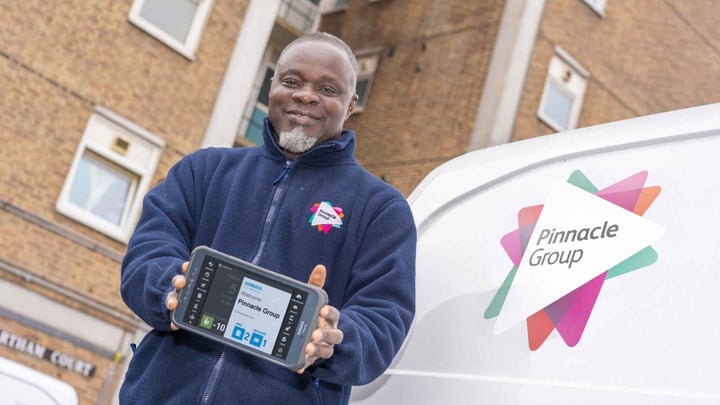

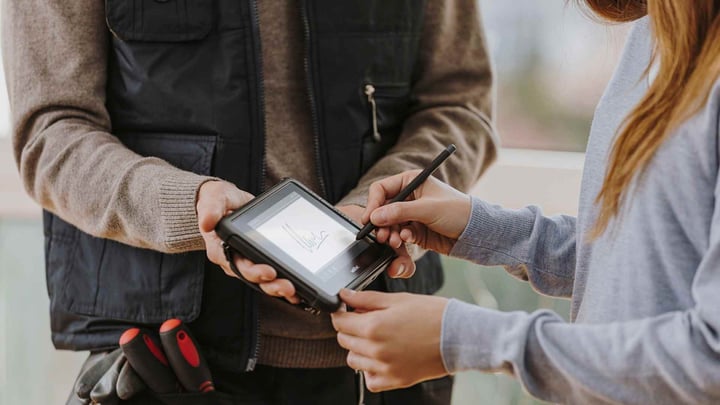

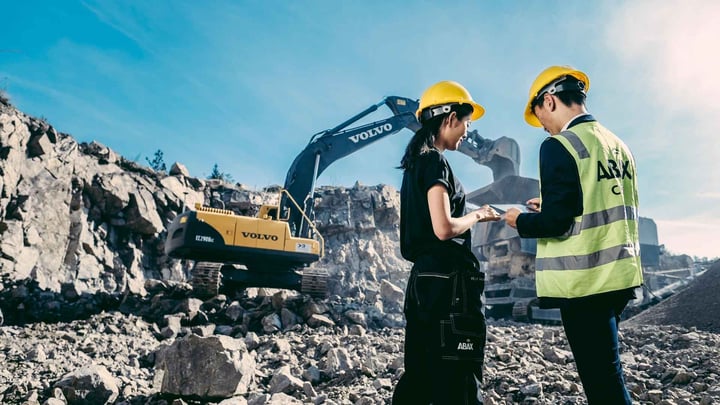







 Field Service News is published by 1927 Media Ltd, an independent publisher whose sole focus is on the field service sector. As such our entire resources are focused on helping drive the field service sector forwards and aiming to best serve our industry through honest, incisive and innovative media coverage of the global field service sector.
Field Service News is published by 1927 Media Ltd, an independent publisher whose sole focus is on the field service sector. As such our entire resources are focused on helping drive the field service sector forwards and aiming to best serve our industry through honest, incisive and innovative media coverage of the global field service sector.
Leave a Reply